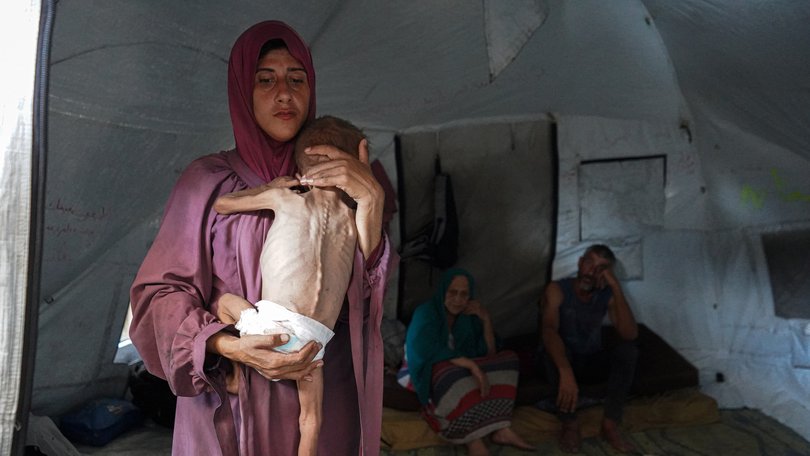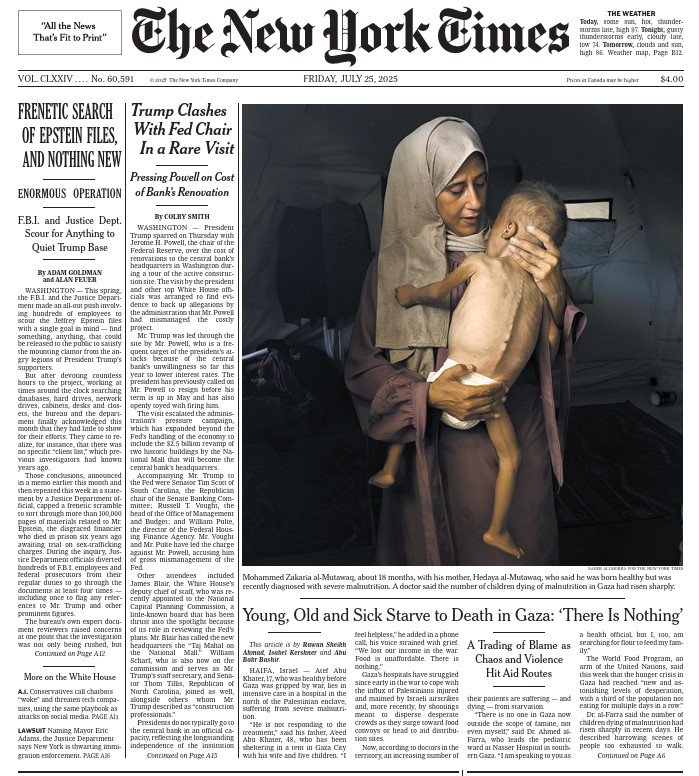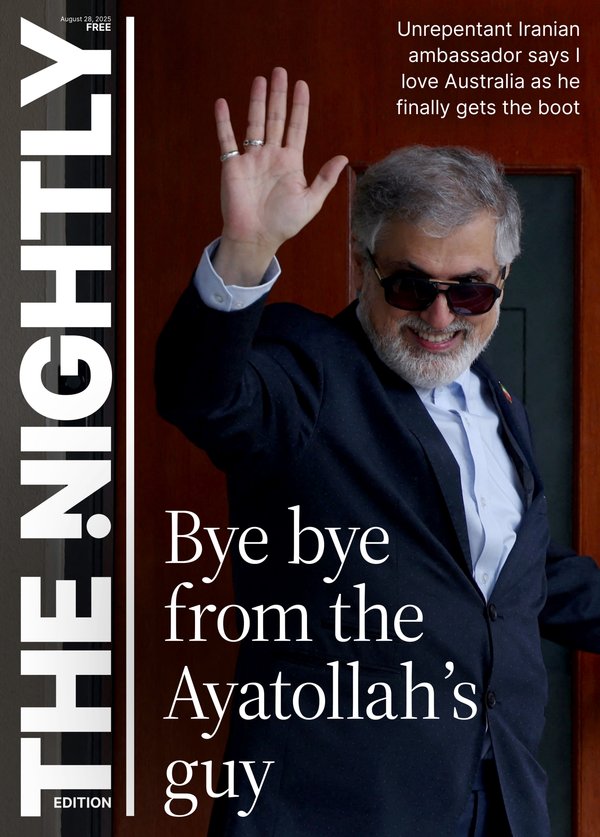New York Times adds context to photo of severely malnourished Gaza toddler after claims it was ‘weaponised’

The New York Times has moved to “add context” to a photo of a severely malnourished Gazan toddler published on its front page and by other media outlets after it was revealed the boy suffered from pre-existing medical conditions.
The photo of an emaciated Muhammad Zakariya Ayyoub al-Matouq was beamed around the world as part of reporting on the dire humanitarian crisis amid Israel’s ongoing blockade and attacks in Gaza.
Outlets including the Sydney Morning Herald, Sky News, BBC and Guardian also used the image taken by the Turkish State news agency Anadou Agency.
Sign up to The Nightly's newsletters.
Get the first look at the digital newspaper, curated daily stories and breaking headlines delivered to your inbox.
By continuing you agree to our Terms and Privacy Policy.In the New York Times it was accompanied by the headline “Young, old and sick starve to death in Gaza”.
But there was an outcry after revelations by Jewish journalist David Collier that he had seen Muhammad’s medical record, which showed he had been diagnosed with cerebral palsy and had a suspected genetic disorder.
He said he became suspicious that there was more to the story behind the image after his mother and brother appeared to be “healthy and fed”.

Calling out the photo, Collier said images like that of Muhammad were “weapons” being used in a propaganda war.
“The people who suffer are not just Israelis. They’re Palestinians too. And our media has become a vital part of that machine. It isn’t just a journalistic collapse – it’s a moral disgrace,” he posted on X.
Collier has previously exposed a BBC documentary on Gaza which was later pulled after it emerged its 13-year-old narrator was the son of a Hamas official.
Now, the Times says it has appended an Editors’ Note to a story about Muhammad.
“After publication, The Times learned that he also had pre-existing health problems,” a post on X by the publication read.
“Children in Gaza are malnourished and starving, as New York Times’ reporter and others have documented.
“We recently ran a story about Gaza’s most vulnerable civilians, including Muhammad Zakariya Ayyoub al-Matouq, who is about 18 months old and suffers from severe malnutrition.
“We have since learned new information, including from the hospital that treated him and his medical records, and have updated our story to add context about his pre-existing health problems.
“This additional detail gives readers a greater understanding of this situation.”
Collier said he took no joy in the move by the Times.
He told The Australian, “Obviously, look, here is a vulnerable child and his condition whilst genetic and whilst from birth and cannot be used to suggest that it’s general famine, his condition is certainly down to the fact that medication and supplemental food are not freely available.
“I’m not waving an Israeli flag saying everything is perfect, that’s not what I’m doing. What I’m saying is that it’s vital that the media maintains its standards, because if it can’t, then what is the point?”

